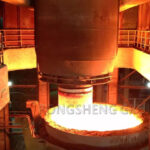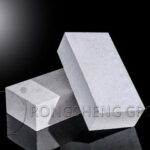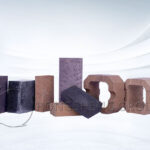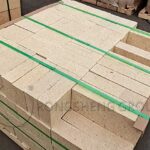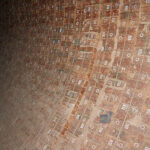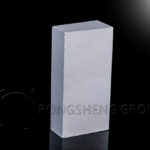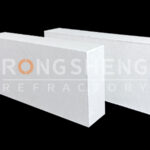Selection of refractory bricks for coke oven body. The coke oven is divided into an oven roof, combustion chamber and carbonization chamber, chute area, and regenerator. When the coke oven is built, the lowermost part is made of refractory concrete as the base. Silica bricks, semi-silica bricks, clay bricks, lightweight insulation bricks, sillimanite bricks, and some refractory castables are used in other parts. Other uses include red bricks for construction, which are not among the refractory materials. Most of them are chosen by Party A nearby.
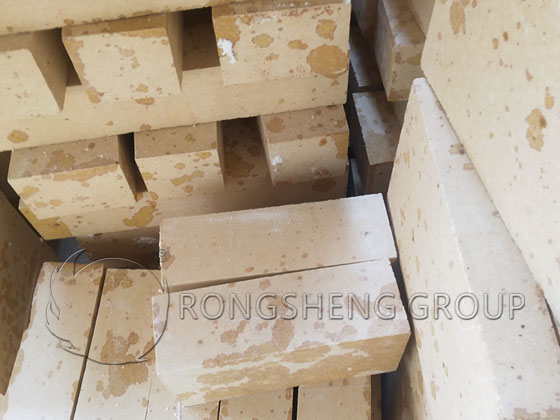
Silica Bricks and Semi-Silica Bricks for Coke Ovens
The largest amount of silica bricks are used in coke oven linings, and silica bricks are acidic series products. The expansion coefficient is large, while the relative expansion of semi-silica bricks is too small after being heated. Semi-silica bricks can reduce the erosion of the lining by slag. The expansion coefficient of semi-silica bricks is between clay bricks and silica bricks, and they have strong resistance to acidic slag.
The coke oven regenerator uses clay checker bricks, and low-porosity clay checker bricks are also used. The upper part of the regenerator is made of low-aluminum checker bricks, the middle part is made of semi-silica bricks, and the upper part is made of clay bricks. The single wall, main wall, and partition wall of the coke oven regenerator are built with silica bricks, and the small flue, flue, and chimney are lined with clay bricks. The small flue is located at the bottom of the regenerator and is connected to the branch flue with cement-expanded perlite bricks as the heat insulation layer.
The furnace wall temperature of the carbonization chamber is 500-1100°C. Large temperature differences will produce thermal stress, causing cracks in the refractory brick lining. Because this part has to withstand fuel pressure, mechanical wear, and impact, as well as erosion and sedimentation consumption. This part is constructed with dense special-shaped silica bricks. The temperature of the furnace heads at both ends of the carbonization chamber will drop sharply because the furnace doors are often opened and closed. Clay bricks, high alumina bricks, andalusite bricks with good earthquake resistance should be used for masonry. The temperature of the furnace door on one side of the carbonization chamber fluctuates greatly. It can be built with clay bricks or cast with cordierite bricks or refractory castables. The outer shell must be filled with thermal insulation materials.
The combustion chamber consists of the furnace wall, furnace bottom, and furnace top. The furnace wall is shared with the carbonization chamber and needs to prevent gas leakage. The working layer of the combustion chamber is made of silica bricks, and the top cover is made of clay bricks or silica bricks. Clay bricks are used for small coke oven covers, and silica bricks are used for large roofs.
The chimney and dry quenching device are built with clay bricks. Add a filling layer to the upper part of the furnace roof, build clay bricks, floating bead bricks, and diatomaceous earth insulation bricks in sequence, and take sealing and waterproofing measures.
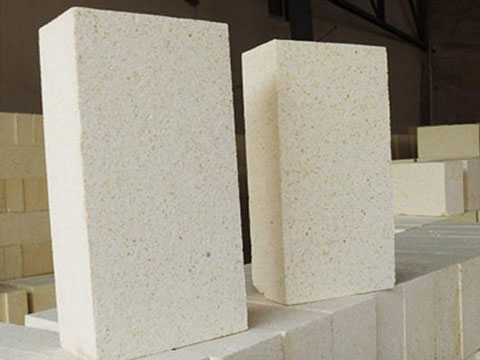
Product Knowledge Introduction to Semi-Silica Bricks for Coke Ovens
Semi-Silica Refractories generally use silica as the main component and a glassy matrix as a binder. The silica content is about 75% to 93%. The raw materials are silicon-containing clay, sand, and refractory mortar. According to the Kiln Refractories Blog, it can resist slag erosion and is used in open hearth furnaces.
Semi Silica Refractory Bricks. Brief Introduction of Semi-Silica Refractories. The Semi-Silica Refractories have an A12O3 mass fraction less than 30% and a SiO2 mass fraction greater than 65%. It is a kind of refractory material that is made of wax stone, siliceous clay, or primary kaolin and its tailings, coal gangue, and other main raw materials, combined with clay as a binder.
Whether in China or international standards, there is no definition of Semi-Silica Refractories. However, refractory materials with a SiO2 mass fraction greater than 85% and less than 93% are defined as silica refractory materials. It also defines Al2O3, aluminum-silica refractories with a mass fraction of 30% to 48% as clay refractories. Traditionally, aluminum-silicon refractory materials with an Al2O3 mass fraction between 15% and 30% are called semi-silica refractory materials. The crystal phases are cristobalite, mullite, and a certain number of glass phases. Its typical representative is wax stone brick.
Performance Characteristics and Application of Semi-Silica Brick
The semi-silica brick produced with pyrophyllite as the main raw material has a refractoriness greater than 1700 ° C. It does not shrink at high temperatures but has a slight expansion. It has good thermal shock resistance, can withstand the impact of steel slag and metal, and has strong creep resistance. Its micro-expansion is conducive to improving the integrity of the masonry and weakening the erosion of slag on the masonry along the brick joints. At the same time, glaze-like substances with high viscosity can be formed on the surface of semi-silica bricks during high-temperature use to prevent the penetration of slag into the bricks, thereby improving the ability to resist the erosion of the slag. In order to improve the performance of semi-siliceous bricks, it is sometimes necessary to add some other substances, such as adding mullite, high-alumina clinker, and zircon to increase the heat resistance of refractory bricks.
Semi-silica bricks are mainly used for ladle bottom lining, ladle lining, pouring steel bricks, and kiln flue. With the increasing requirements for steel quality, the amount of semi-silicon bricks used in the steel industry has been very small. In addition to wax stone, other semi-silicon materials and minerals can also be used to make semi-silicon refractory materials.
Technical Conditions of Semi-Silica Bricks for Coke Ovens
The Al2O3 content of semi-silica brick is 15%~30%, and the SiO2 content is greater than 65%. It is a semi-acidic refractory product. Semi-silica bricks generally use refractory clay containing quartz sand, pyrophyllite (Al2O3, 4SiO2·H2O), and refractory clay or kaolin mineral processing tailings as raw materials.
Semi-silica bricks have moderate expansion characteristics. This micro-expansion property is beneficial to improving the integrity of the masonry and weakening the erosion of the slag on the masonry. Another characteristic of it is that when high-temperature slag comes into contact with the surface of the brick, a layer of glaze-like substance with high viscosity is produced on the surface of the brick. The molten material with high SiO2 content formed by the interaction between the slag and the product has a thickness of 1~2mm. This blocks the pores, prevents the slag from continuing to penetrate into the brick, and forms a protective layer, thereby improving the brick’s resistance to erosion.
The raw materials used in semi-silica bricks are large in storage and low in price. They can replace second and third-class clay bricks and have a wide range of uses. Because semi-silica bricks have good resistance to acidic slag, they have high-temperature structural strength and are relatively stable in volume. It is mainly used for building coke ovens, acidified iron furnaces, metallurgical furnace flues steel drum linings, etc.
The more representative and commonly used semi-silica bricks are wax stone bricks. Their appearance is not much different from clay bricks, and they are white or off-white. The product expands slightly than the adobe, with an expansion rate of about 0.7% to 0.9%. The high-temperature performance is similar to that of clay bricks, the refractoriness ranges from 1670 to 1100°C, and the load softening temperature is from 1300 to 1430°C (starting point).
Manufacturer and Sales Manufacturer of RS Refractory Bricks
RS Refractory Brick Manufacturer is a powerful refractory material manufacturer. Our refractory products are of reliable quality, and our professional technical team can provide high-quality refractory lining solutions for high-temperature industrial furnaces. In addition, our comprehensive customer service protects the rights and interests of customers, more effectively helps customers extend the service life of industrial furnace linings, and saves production costs for enterprises. Contact us for free samples, solutions and quotes.


